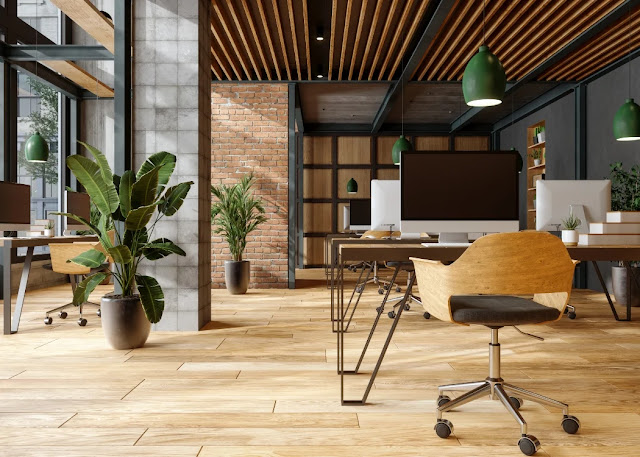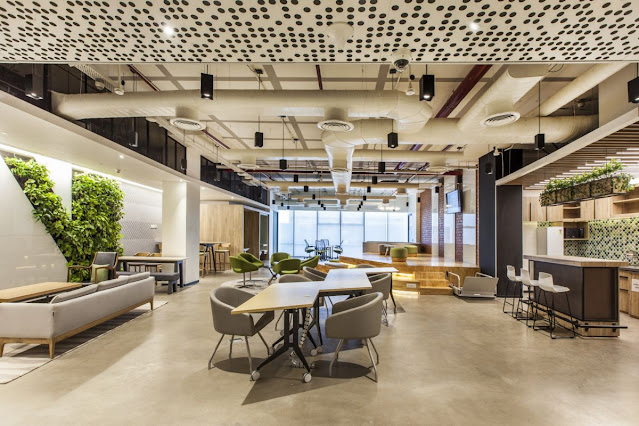Collaborative Workspaces for a Better Team Experience
Collaborative workspaces are designed to foster teamwork and collaboration among individuals or teams. These types of workspaces often feature open floor plans, shared desks, private office, and meeting rooms equipped with the latest technology. This type of environment allows teams to work together more effectively, as they can easily communicate and collaborate with one another in real-time.
In addition to facilitating better teamwork, collaborative workspaces can also provide a more engaging and dynamic work environment, which can help to improve employee satisfaction and productivity. For example, these spaces may feature areas for breaks, socializing, and relaxation, allowing employees to recharge and return to work with a renewed sense of focus and energy.
Moreover, by promoting a sense of community and collaboration, collaborative workspaces can help to foster a more positive corporate culture. This can lead to better employee morale and improved employee retention, as well as helping to attract and retain top talent in a competitive job market.
Overall, collaborative workspaces can offer a range of benefits to organizations, from improved teamwork and collaboration to a more engaging work environment, and a more positive corporate culture.
The Benifits of Collaborative Workspaces:
- Increased productivity: Working in a collaborative environment can help increase productivity as individuals can work together on projects, share ideas, and provide feedback to one another.
- Networking opportunities: Working alongside other professionals in a collaborative workspace can provide opportunities for networking and building professional relationships.
- Cost savings: Shared office space and resources can be more cost-effective than having a traditional office space, especially for small businesses and startups.
- Flexibility: Collaborative workspaces often offer flexible rental options, such as hourly, daily, or monthly rentals, allowing businesses to adapt to their changing needs.
- Access to resources: Collaborative workspaces often offer a range of resources and amenities, such as meeting rooms, high-speed internet, printing and copying, and kitchen facilities.
- Improved work-life balance: Collaborative workspaces can provide a better work-life balance, as individuals can choose to work from a more convenient location, rather than commuting to a traditional office.
- Stimulating environment: Collaborative workspaces often feature open and stimulating environments that can help improve creativity and inspiration.
- Enhanced collaboration: Working in close proximity to others can encourage collaboration, communication, and teamwork, leading to better results and outcomes.
- Better sense of community: Working alongside others in a collaborative workspace can create a sense of community and belonging, improving employee morale and job satisfaction.
The Future of Collaboration in Coworking Spaces:
- Technology integration: Coworking spaces are integrating technology to enhance collaboration and provide better experiences for members. This includes tools for virtual collaboration, such as video conferencing and online project management, as well as technologies that enhance the physical environment, such as smart lighting and temperature control.
- Focus on wellness: Coworking spaces are becoming more mindful of the importance of physical and mental well-being for their members. This includes features such as ergonomic furniture, quiet spaces, and healthy food options.
- Community building: Coworking spaces are placing greater emphasis on community building, offering events and activities to help members connect and network with one another.
- Personalization: Coworking spaces are becoming more personalized to meet the unique needs and preferences of individual members. This includes offering private office spaces, customizable workspaces, and a range of membership options.
- Sustainable design: Coworking spaces are adopting sustainable design practices to minimize their environmental impact, such as using renewable energy sources, reducing waste, and incorporating greenery into the design of the space.
- Remote work: With the growth of remote work, coworking spaces are becoming a more integral part of the remote work landscape, providing remote workers with a place to work, network, and collaborate.






Comments
Post a Comment